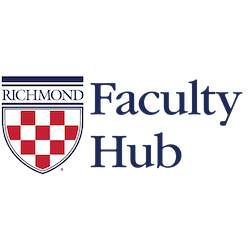When I started teaching in the Biology Department, I was enthusiastic to incorporate active learning with data into my classroom. My ideal activities asked students to use data and graphs to draw conclusions from studies that tested biological principles. Unfortunately, I kept running into student discomfort with very basic data skills such as organizing, summarizing, and graphing that resulted in short activities becoming lengthy and frustrating. To help students acquire data literacy skills, I started scaffolding data tutorials into most of my classes alongside biology concepts.
While this worked well, I wanted more time to engage students in thinking deeply about the presentation of data in biology and society. And I was anxious to advance my own knowledge, as my graduate training was not keeping pace with the tools now used by many in my field. I decided to invest more time in using Program R and learning pedagogical approaches for building student enthusiasm for coding. I just needed a nudge of confidence and support, and the pilot year of the Faculty Hub Associates program came at the perfect time to explore approaches for teaching data literacy at UR.
As I learned from the experiences of others, I’ve collected and curated materials for low stakes ways to build data skills in students across disciplines. Some of my favorite resources include:
-
-
- Engaging students with graphs and data presentation in the media
- What’s Going On in This Graph? from the NYT
- Figure of the Day from QUBES
- Engaging students with graphs and data presentation in the media
-
- Examples and case studies from Calling Bullshit
- Also see the tips sheet from the Faculty Hub Book Club
- Examples and case studies from Calling Bullshit
-
- Emphasizing fundamentals in data management and Excel
- Data organization lessons from Data Carpentry
- Spreadsheet tutorials from HHMI BioInteractive
- Emphasizing fundamentals in data management and Excel
-
- Having students use data to reflect on their habits using the Dear Data project
- Example class assignment
- Having students use data to reflect on their habits using the Dear Data project
-
- Taking a game break in class (or at home!) with Charty Party
- The All Ages edition can be purchased, borrowed from the Faculty Hub, or I adapted a virtual versionthat can be played in Jamboards or Google Slides
- Taking a game break in class (or at home!) with Charty Party
-
Initiatives in Data Analytics and Data Science highlight the investment on campus for building student data skills. These include the quantitative data literacy general education requirement, the proposed interdisciplinary Data Science & Statistics Minor, strengths in Digital Humanities and Spatial Analysis, and the recent purchase of a high-performance computing cluster and webserver. Courses that build student skills in programming and data analysis are already available across disciplines, and these initiatives strengthen the programs and resources that prepare students for a data-rich world.
For biology students, the increasing availability of environmental and public health data makes learning skills in exploration and visualization vital. My colleague Angie Hilliker and I developed a new upper-level biology course to address this need called Data Visualization and Communication for Biologists (syllabus).
As we explored topics in data visualization, we introduced students to Tableau and Program R and it was the first time either of us taught with these tools. While it was great to give students exposure to multiple platforms, doing both well was hard and we’ll likely shift more towards Program R when we offer the course again. There are pros and cons for including Program R in undergrad biology courses due to the time needed to develop confidence and independence with coding and it really helped to have an entire course focused on these skills. Our students were highly enthusiastic about learning data skills, and reported valuing the tools they learned for their future careers.
Thank you to the Faculty Hub for supporting my exploration of new skills and pedagogy. Despite being mostly virtual, I really valued spending time at the Hub with Linda Boland, Ryan Brazell, Kylie Korsnack, Andrew Bell, and Jane Bise as well as fellow Hub Associates Libby Gruner and Kristine Nolin. I explored several other new teaching approaches during my time in the Hub, including social annotation tools to increase student engagement and accountability with course readings (Perusall was a game changer for having students show up to class having done the reading). I am grateful for the support of the Biology Department and chair Krista Stenger for developing a new course and especially to Angie Hilliker for teaching with me.
